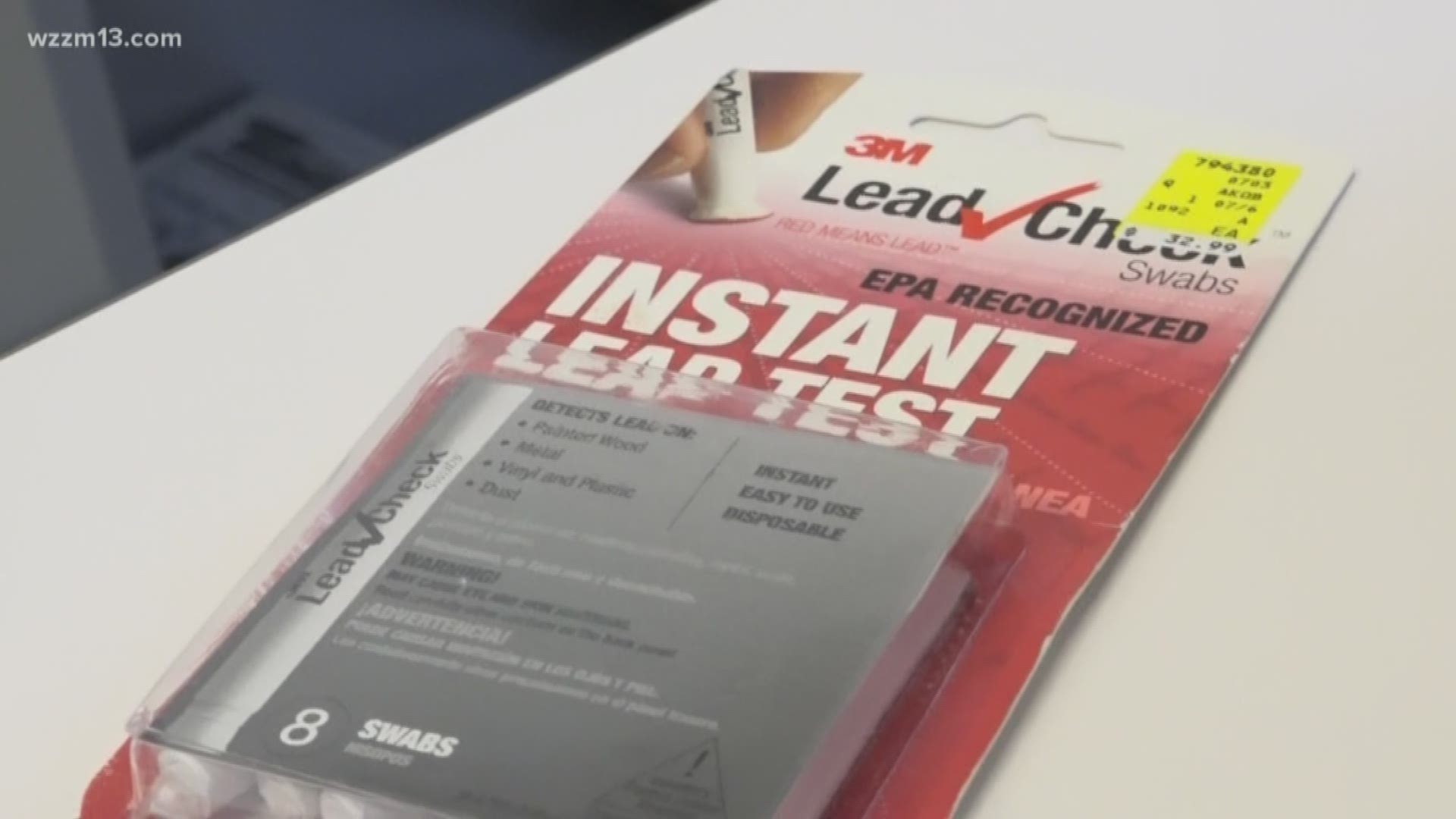GRAND RAPIDS, Mich. - Lead in paint is a silent danger, and by the time its harmful effects are felt it's often too late.
There are many misconceptions that could be harmful to your family.
Lead is a chemical element with symbol Pb and atomic number 82.
So with the help of David Jacobs, the chief scientist at the National Center for Healthy Housing, 13 On Your Side verified the facts about lead from eight myths and have two quick tips to keep your family safe.
1. Lead poisoning is confined to low-income communities.
False. All houses built before 1978 likely have some lead-based paint, no matter the type of neighborhood.
2. Most kids get exposed to lead by eating paint chips.
Nope. Most kids are actually exposed to lead dust, which you often can't even see.
Around the ages of 1 to 3, when kids start crawling on the floor, lead in contaminated house dust gets onto their hands, which they put in their mouths.
3. It takes a lot of lead paint to cause lead poisoning.
Wrong.
"If you imagine like a sugar packet that you might put in your coffee... it would only take a few grains of that to poison a child," Jacobs said.
4. Lead poisoning isn't a problem anymore.
Incorrect. According to the CDC, 535,000 U.S. kids 1 to 5 years old have blood lead levels high enough to damage their health.
"That is clearly an epidemic in anybody's book. We still have 37 million homes in this country that have lead paint in them somewhere," Jacobs said. "Despite some progress, it still remains a very large problem."
5. Low levels of lead are harmless.
Not true. Scientists have yet to find a safe exposure for lead.
"We are still swimming in a sea of lead," Jacobs said. "Our exposures today are still 100-times over where our ancestors were at before industrialization."
6. Only children are at risk from lead poisoning.
No. Although kids have the highest risk, adults can also be have toxic effects like high blood pressure, heart disease, kidney disease and brain damage.
7. Lead paint is only a problem when it is damaged or deteriorated.
Negative. Even intact lead paint can be a problem.
"It's not just a matter of whether it's damaged or deteriorated or not, it has to be managed regardless of its condition and ideally should be fully abated," Jacobs said.
8. Lead poisoning only comes from living in a house or apartment built before 1978.
Not necessarily. Although that is the main risk factor, it's not the only one.
Lead can be in water pipes, consumer products, and even sometimes in food, like certain candy.
Two quick tips from our expert:
1. The best medicine for lead poisoning: prevent it in the first place.
"We shouldn't be using our children as lead detectors," Jacobs said. "We have instruments and techniques to identify the problem before they're harmed."
2. The short-term fix for lead paint is stabilization, but the best solutions are long-term, like enclosure or paint removal.
But make sure the removal method is safe, and test your home again once it's complete.
►Make it easy to keep up to date with more stories like this. Download the WZZM 13 app now.
Have a news tip? Email news@wzzm13.com, visit our Facebook page or Twitter.

